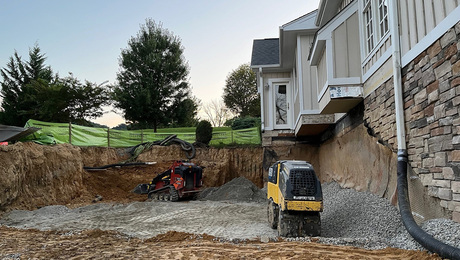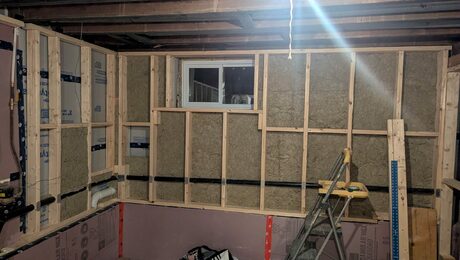Podcast 559: Contractor Charges in High-Income Areas, Electric Fireplaces, and Problem Brick Veneer
The crew hears about tool batteries and Canadian air barriers and answers questions about working in high-end neighborhoods, electric fireplace and brick veneer.
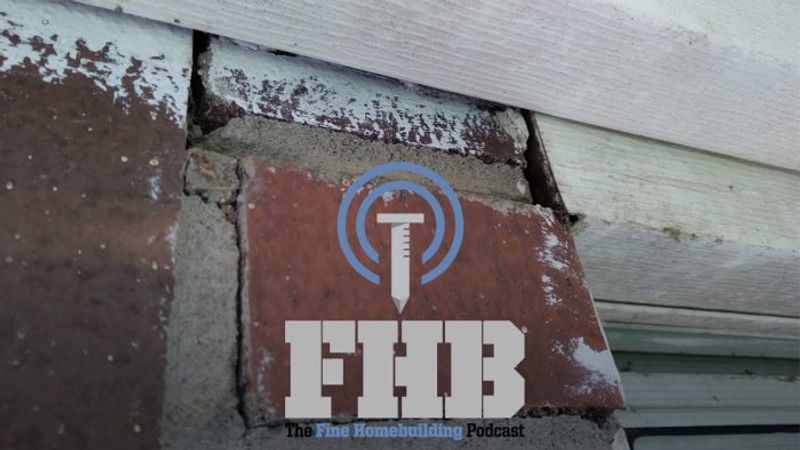
Follow the Fine Homebuilding Podcast on your favorite app. Subscribe now and don’t miss an episode:
 |
Help us make better episodes and enter for a chance to win an FHB Podcast T-shirt:
www.finehomebuilding.com/podcastsurvey
David from Sweden tells us about European tool batteries. James from Canada explains air and vapor barriers. Scott says ground-source heat pumps are not for efficient houses. Moral Quandary asks about contractors charging more for work in high-end areas. Dale wonders about electric fireplaces. Justin asks about his home’s brickwork.
Editor Updates:
- Kiley’s new town observations
- Mike’s barn demo
- Jeff’s yardwork
- Patrick’s concrete floor
|
|
Listener Feedback 1:
David from Sweden writes: Hej! Hey!
Universal batteries came up on a recent podcast and the CAS batteries were mentioned. Metabo and Mafell are two of the better known names for that system. Now Bosch is starting an alliance and they appear to have Fein as a partner, among other professional brands. I’m forwarding a marketing email—it’s in Swedish, I know, but the video link is in English or British ?. Check out the AAT stair-climbing …vacuum? Fire bin? Not sure what it is, but it lifts itself up one step at a time. Anyhow, thought this might be of interest, not sure if it’ll make it to North America or not.
Related Links:
- Cordless Alliance System: One battery, many solutions
- Bosch, Fein and Rothenberger launch battery alliance
Listener Feedback 2:
James writes: Hi Patrick and crew,
As a building code engineer in Canada, I hope to add some clarification on the building code requirements for vapor barriers in Canada, discussed in Episode 549, which are perhaps less different from the US than sometimes thought.
The National Building Code of Canada, which is a model code adopted with slight variations in each province, gives the requirements for vapor barrier materials for houses in article 9.25.4.2. The vapor barrier must have a permeance of less than or equal to 1 perm (equivalent to a Class I or II vapor retarder in the IRC), and can be any of the following materials: polyethylene (of course), membrane-type barriers “other than polyethylene,” coatings applied to drywall, or foamed plastic insulation.
Spray foam and 6-mil poly are widely accepted as vapor barriers by building inspectors, so why don’t we hear more about “other” membrane-type barriers and coatings? Part of the challenge is that the products must be tested to the Canadian standards listed in the code, but certification can be expensive (think hundreds of thousands of dollars) so companies often only test to American standards, which some inspectors may accept but others may not.
The most straightforward way to demonstrate compliance with the building code for construction products in Canada is to get an evaluation report from the Canadian Construction Materials Centre (CCMC).
Based on some quick searching of “smart vapor retarders,” CertainTeed’s MemBrain had this CCMC evaluation done in the 2000s, but it expired in 2019 without being renewed for reasons that are not clear. Pro Clima’s Intello Plus states on its website that it also meets the Canadian testing standard but doesn’t provide any proof, although maybe they would if asked. I could only find vapor-retarding paints tested to US standards, so again, this would be at the discretion of the inspector. I know that many of these products are accepted by inspectors in Ontario, so best just to check before you start.
Finally, a side note: if you are using our beloved Tuck Tape to seal your poly as an air barrier, you have to use the blue version, which has more adhesive, because poly is hard to stick to. The red version, which is about $2 cheaper and has less adhesive, is only for sealing exterior WRBs as air barriers, like Tyvek.
Hope that helps! James
Related Links:
Listener Feedback 3:
Scott in Lebanon, Ohio, writes: Hello podcast,
Regarding the house design question in Episode 555, the cost and complexity of ICF should absolve them of the cost and complexity of geothermal. In our house, which is not ICF, when we modeled the energy savings of geothermal vs a heat pump, the payback was 60 years. Our energy here is relatively affordable, about 12 cents per kWh. Well-insulated and air-sealed homes shouldn’t need geothermal, which seems best for old, leaky, inefficient homes.
Related Links:
- A Geothermal Heat Pump Takes Care of Heating and Cooling
- Ground Source Heat Pumps and Air Source Heat Pumps
- A Fresh Look at Ground-Source Heat Pumps
Question 1: Is it ethical to charge more in upscale neighborhoods?
Moral Quandary writes: Greetings FHB Podcast Friends,
I write for your perspective on a sticky situation perhaps more related to ancient considerations of commerce and human nature than construction. I’ve been longtime friends with some folks who work in the trades and do residential contracting. Over late-night beers at a party at one of their houses a few weeks ago, it came up that it’s common practice in the area to add a premium or up-charge to jobs in certain towns and neighborhoods because the clients “can afford it.” I was surprised that this wasn’t said like a dark secret being exposed, but an obvious “well duh” fact of business.
As a DIYer I appreciate that my engagement with renovation work is on my terms. I have the luxury of not having to support my family with a hard job that wears out the body, and respect that trade and manual work is too often unfairly devalued and underpaid. Buuuut… as someone fortunate enough to live in one of those “can afford it” towns, and who will be paying student loans until I retire, the notion that the price is different based on my zip code or what someone else thinks my finances are irked me! Money and class and fairness are complicated subjects to unpack, but as I’ve been preparing to hire a contractor to build a garage, this has weighed on my mind, perhaps unreasonably complicating an already difficult decision. I think the fairest thing to do is go with the plan and proposal that work for me and not worry how the figures were calculated and just appreciate the final product? Maybe this is too provocative a topic for the pod, but I’m certainly interested in the gang’s thoughts on this.
Related Links:
- 3 Ways to Price Construction Projects
- Construction Pricing: Line Item or Lump Sum
- Checking Your Construction Estimate
Question 2: What should I know about electric fireplaces?
Dale writes: Hello Patrick —
In our home we have a double-sided gas fireplace, with one side open to the master bedroom and the other side to the master bath. The main gas valve failed and a replacement is not available, so I plan to replace the gas fireplace with two electric fireplaces back-to-back.
The first place I looked for information was FHB. Several searches revealed essentially zero information about internal electric fireplaces. This would be an excellent topic for an article covering: technologies used to produce the flame effect and the pluses/minuses, code requirements (and in my particular case, use in a bathroom), how much heat to expect, installation ideas, power consumption without and without the heater on.
I’ve contacted you before on other topics and have listened to every podcast since number one. My normal routine is to listen Sunday mornings when the dog and I go for a five-mile walk. You have a great team. Keep up the good work
Related Links:
Question 3: How do I address the problems with my brick veneer?
Justin, a crazy 33-year-old mailman in northeastern Oklahoma, writes: Greetings FHB crew!
My wife and I have been living in our current house for the last 7 years or so, during which time we have been learning a lot about the “joys” of homeownership.
I’ve listened to several hundred episodes of your podcast over the last year, picked up a number of books, and done a lot of reading of your content, but something that I can’t seem to quite track down is information on dealing with brick veneer.
 |
 |
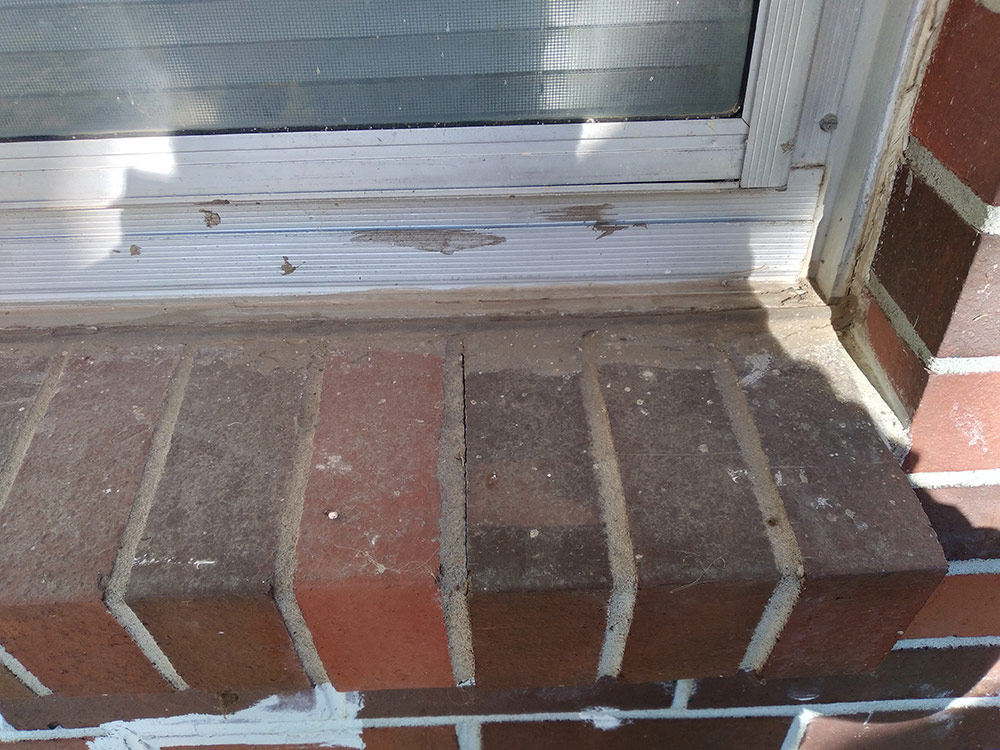 |
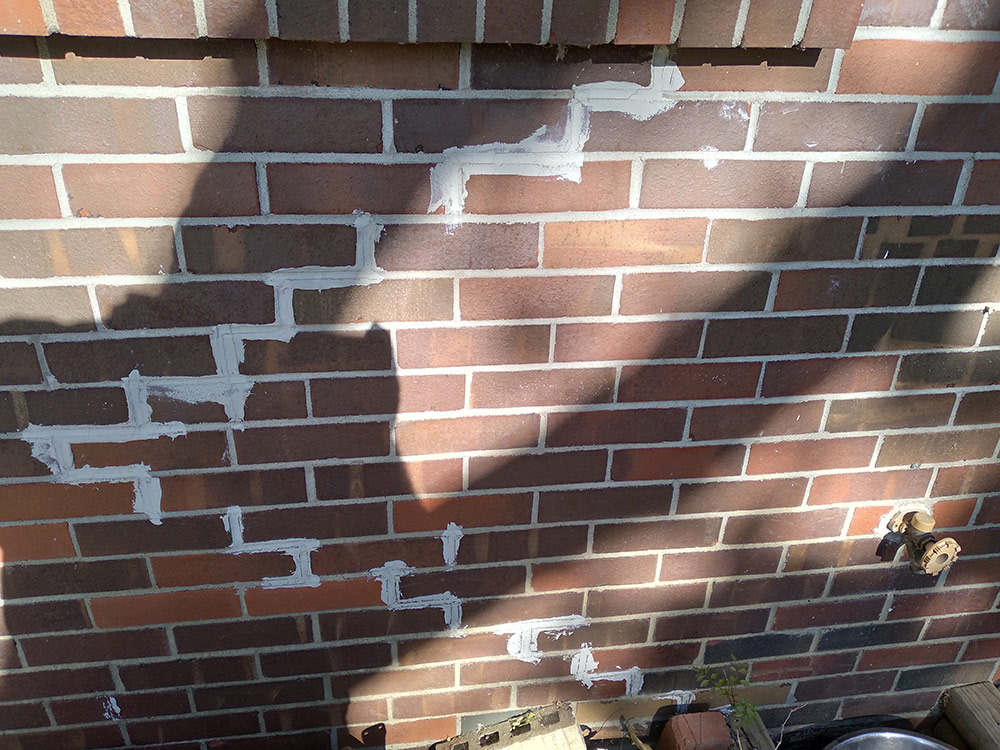 |
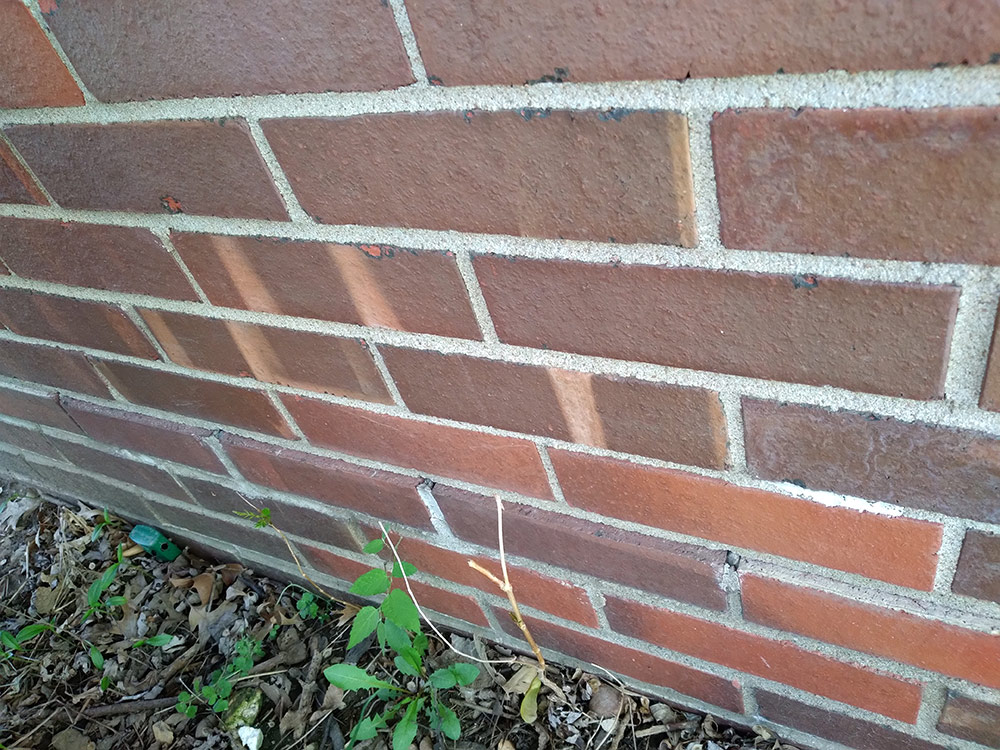 |
Here are some photos of my current issues with the veneer. The window areas are of great concern, as two bricks on the upper left corners of two of my windows are completely loose. These windows are both west facing and located on the south side of the home (one into a bedroom, the other a bathroom). Only these two windows have the issues, as I have checked the windows on every side of the house. The caulk seals have also separated around the edge of the window. There is evidence of settling or a sagging foundation (or what I assume to be a foundation issue), with the presence of cracks in the mortar under the bathroom window and cracks and a split brick near the bedroom window.
The drywall is cracked inside as well in very similar places. I have patched these cracks several times, and since they keep opening up, I believe there is still either movement going on, or there is some other type of event going on. This is a 1960s home that I know is very leaky and energy inefficient. I should also mention that we do have some seismic activity and experience the odd quake every now and again. (I forgot to mention we live in Bartlesville in northeast Oklahoma, if it helps any).
The section of veneer that is most concerning, however, is the north side, where you can see a total separation and shifting of the upper portion of the wall away from the bottom. I am very concerned about water penetration in the spring and summer, and potential ice expansion issues in the winter. Walking around the house I also noticed that there is not a single weep hole that I can find. How do I address these issues? I am almost afraid to see the condition of the sheathing and insulation behind. Thoughts? Suggestions on where to start?
Thank you for your time and consideration. I hope that this produces some good, fun, entertaining, and hopefully educational discussion and also presents some starting points for me to begin working on my house and solving these issues.
Related Links:
END NOTE:
Podcast 559: Members-only Aftershow — Carbon Costs of Construction
Kiley, Mike, and Patrick discuss embodied carbon and carbon costs of residential and commercial construction.
Check out one of our latest Project Guides: Energy Retrofit!
Check out our FHB Houses:
Visit the Taunton Store • Magazine Index • Online Archive • Our First Issues • All Access
Help us make better episodes and enter for a chance to win an FHB Podcast T-shirt: www.finehomebuilding.com/podcastsurvey

If you have any questions you would like us to dig into for a future show, shoot an email our way: [email protected].
If we use your question we’ll send you a FHB Podcast sticker!
FHB Podcast T-shirts!
Represent your favorite podcast! Available in several styles and colors. Made from 100% cotton. Find the Podcast t-shirt and more cool products in the Fine Homebuilding Store.
| Fine Homebuilding podcast listeners can now get 20% off anything in the Taunton store, including Pretty Good House.
Use the discount code FHBPODCAST to take advantage of this special offer. |
 |
“Finally, knowledgeable people talking about building reasonably-sized, high-performance houses for normal people with real budgets!” — DanD, VA, 8/19/22, Amazon.com review |
We hope you will take advantage of a great offer for our podcast listeners: A special 20% off the discounted rate to subscribe to the Fine Homebuilding print magazine. That link goes to finehomebuilding.com/podoffer.
The show is driven by our listeners, so please subscribe and rate us on iTunes or Google Play, and if you have any questions you would like us to dig into for a future show, shoot an email our way: [email protected]. Also, be sure to follow Fine Homebuilding on Instagram, and “like” us on Facebook. Note that you can watch the show above, or on YouTube at the Fine Homebuilding YouTube Channel.
The Fine Homebuilding Podcast embodies Fine Homebuilding magazine’s commitment to the preservation of craftsmanship and the advancement of home performance in residential construction. The show is an informal but vigorous conversation about the techniques and principles that allow listeners to master their design and building challenges.
Other related links
-
- All FHB podcast show notes: FineHomebuilding.com/podcast.
- #KeepCraftAlive T-shirts and hats support scholarships for building trades students. So order some gear at KeepCraftAlive.org.
- The direct link to the online store is here.













